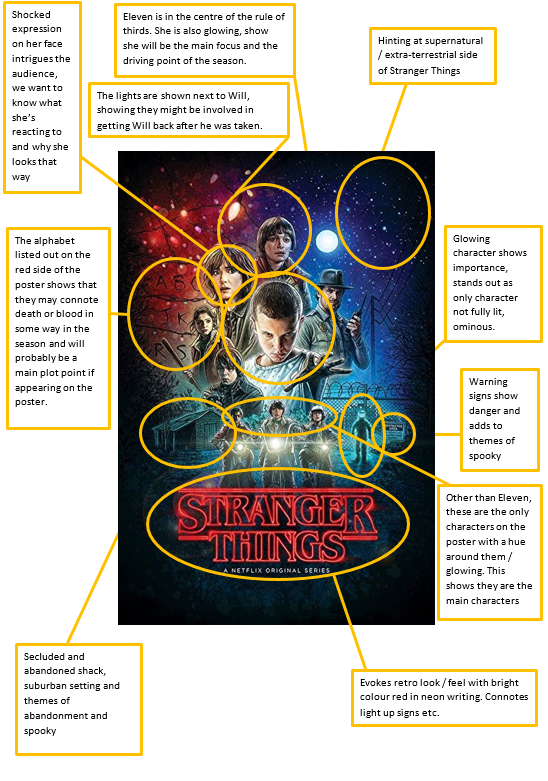E| xample from scene
E| xplore:
C| amera
E| diting
M| ise En Scene
S| ound
Refocus on Question + Audience
COMPARE
REPEAT!!
Example question from first episode;
Explore the way that different groups of people are represented in ST and D83
• audience
• media language
P: In ST, we see a counter typical representation of women (especially considering the 1980s setting) in that we see empowered women.
E: We see the ‘social worker’ murder Benny, Eleven kills two men, and although Nancy isn’t aggressive, she does control the scene with her and Steve.
E: It is an interesting subversion of stereotypes – the 1980s setting leads us to expect submissive, powerless women, but the 21st Century construction transfers modern ideologies and values and empowers the women.
CEMS: When we first meet the social worker, we view her from a high angle shot, from the point of view of Benny. This reinforces the patriarchal hegemony which tricks us into thinking that she is a typical submissive woman. However, when she shoots Benny, she is elevated onto an equal level with the other government officials, and is even empowered through a low angle shot. This reinforced by the editing – the screen time she is given compared to the (silent and nameless) male officials is significantly greater, therefore empowering her.
A: This shocks the audience, which is important for narrative, but the Duffer Brothers are also trying to highlight the everyday sexism in society – even though we are a modern audience, we fell into the trap of putting sexist assumptions onto the scene.


